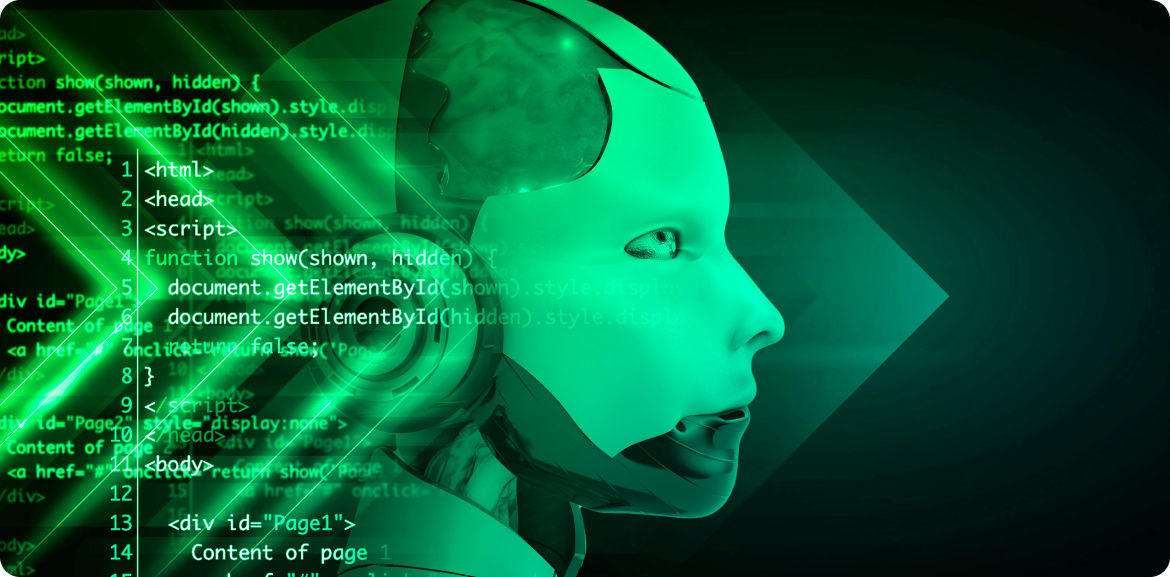AI Chatbots – Taking Customer Service to a Whole New Level

In the fast-evolving digital technology landscape, Artificial Intelligence (AI)-based chatbots have emerged as a super tool in transforming customer service and engagement for businesses across the globe. While chatbots have been around for quite a while, they have now reached a whole new level of sophistication with the help of AI technology. These powerful digital assistants are like the Swiss Army knives of the digital world, slicing through mundane tasks and unlocking endless new possibilities for customer service across industries. Imagine having a helper who never sleeps, eats, or takes coffee breaks. That’s your AI chatbot in customer service – always ready to tackle any query, from the mundane “When is my order arriving?” to the more complex “How do I choose a good investment plan?”. In the digital shopping aisles, AI chatbots can double up as personal stylists, picking out the perfect pair of jeans or recommending a piece of jewellery based on your tastes. In banking, they can provide sound advice on how to manage your investments. In healthcare, they can be much like friendly nurses reminding you to take your medicines. In education, they can suggest courses based on your needs. In travel, they can snag you the best deals on flights and accommodations. The list is endless.
AI chatbots, with their ability to understand, process, and respond to human language in a manner that is both conversational and contextually relevant, are revolutionizing the customer service industry, one chat at a time. By leveraging cutting-edge technologies such as Natural Language Processing (NLP) and Machine Learning (ML), these chatbots are carrying on conversations that closely resemble human speech and sound personal in a way not thought possible for a machine previously. Besides their conversational capabilities and 24/7 support, AI chatbots stand out by providing businesses with invaluable insights into customer preferences, behavior, and feedback. These help businesses tailor their services and products more effectively, ensuring that future customer needs are not just met but anticipated. As per Salesforce, almost 23 percent of customer service companies already use AI chatbots and many more are planning to adopt them in the coming months.
How Do AI Chatbots Work?
AI chatbots operate using a highly advanced blend of technologies such as Natural Language Processing (NLP), Machine Learning (ML), and sometimes Deep Learning (DL), to simulate human-like interactions with users. At the heart of an AI chatbot’s functionality is its ability to understand and interpret human language in its many nuances. When a user inputs a query, the chatbot uses NLP to break down and analyze the language, understanding the intent behind the user’s words. Machine Learning algorithms then come into play, using data from past interactions to predict the most appropriate response based on the context of the conversation. Over time, as the AI chatbot encounters more queries and receives feedback on its responses, it learns and adapts, becoming more adept at providing accurate and relevant answers. This continuous learning process allows AI chatbots to improve their conversation skills, enabling them to handle a wide range of customer service tasks, from answering frequently asked questions to assisting with transactions, and even offering personalized recommendations, all in a conversational and engaging manner.
AI Chatbot Example
Use Case for An Online Retail Business
Imagine a mid-sized online business specializing in handmade jewellery. As the business grows, support teams are overwhelmed by the volume of customer inquiries pouring in. Questions range from order status and shipping details to personalized requests for custom designs. Managing these is highly time and resource-consuming and the business fears a decline in the quality of customer service. It deploys an AI chatbot, Evo, on its website. Evo is programmed to handle a wide range of common inquiries and provide instant responses to customers 24/7 in a way that feels personal. Evo soon answers a myriad of questions, ranging from those about customization options, other recommendations, and delivery times. The AI bot also shares reviews from previous happy customers. Impressed by the efficient and helpful service, many customers place orders on the website. Increasingly, Evo’s answers get better. The data collected by Evo during customer interactions help the bot learn to finetune its responses keeping in mind the uniqueness of each customer. The business is able to gradually improve its customer services as well as product offerings.
How Do AI-Based Bots Differ From Rules-based Bots?
Rule-based chatbots are a popular choice among many businesses. They are easy to set up and control and do not require complicated coding. Once a business identifies the use case for which the bot is needed, say order taking for restaurants, users simply need to choose the most suitable conversation design platform from a host of available options and map predetermined dialogue flows based on relevant cases. Platforms can be customized according to prebuilt chatbot templates that are industry-specific. They come with a simple drag-and-drop interface, where users can build automated conversations with no absolutely no coding requirements. This kind of a bot is programmed to ask simple questions and relies heavily on customer inputs. One major downside of such chatbots is they don’t learn from user interactions and cannot answer questions outside the pre-set options or scenarios. This approach, while effective for straightforward, predictable interactions, limits the chatbot’s ability to handle complex, nuanced, or unexpected questions from users. Also, unlike AI-based bots, they can provide personalized responses that sound almost human-like. This can lead to user frustration in some circumstances. This is where AI chatbots come in. Powered by artificial intelligence and machine learning technologies, these bots pick up customer sentiments and can modify their answers accordingly.
Rules-Based Chatbot vs Conversational AI Bot – At a Glance
| Rules-Based Chatbot | Conversational AI Chatbot |
|---|---|
| Easy to build and integrate | Require lots of data to be trained and generate output and are more expensive to build |
| Can only provide answers to already set rules | Have the capacity to interpret the intent behind a user’s message, regardless of how the query is phrased and provide responses accordingly |
| Interactions are robotic and de-personalized | Interactions mimic human conversation and can be personalized based on the user’s responses |
| Do not have capacity to learn from past interactions | They are programmed with NLP and Machine Learning to induce self-learning from user interactions and can improve over time |
| Are programmed to respond to specific commands or queries with pre-established answers so lack versatility | Are more versatile and powerful tools for enhancing customer service and engagement |
AI Chatbot or Rules-Based Bot – Which One Should You Opt For?
The choice between an AI-based chatbot and a rules-based chatbot depends on several factors, including your company’s specific needs, the complexity of your customer interactions, budget constraints, and the level of personalization you desire in customer service. If your scope of customer inquiries is narrow and can be easily anticipated and categorized into are finite set of questions, rules-based bots may be the better option for you. They are also generally cheaper and faster to implement. They are good for straightforward customer service tasks, such as answering FAQs or guiding users through a set process (e.g., booking appointments, registering for events) and a simple to maintain.
However, if you deal with a wide range of customer inquiries that require understanding context, nuances, and varied user intents, an AI-based chatbot is definitely more suited to your needs. Its ability to learn from past interactions and understand natural language makes it ideal for handling complex queries. Also, if you have a large customer base generating a high volume of inquiries across different topics, you will benefit more from an AI chatbots. These bots can manage and appropriately respond to diverse customer needs without being explicitly programmed for each one. They are also a much better option if you are looking to personalize you customer responses. AI chatbots can learn from past interactions and user data to tailor their responses and recommendations, providing a more customized service. Also, if you are planning to scale your operations or expand the scope of your customer service, AI chatbots are a more future-proof option for you. AI bots are capable of taking customer service to a whole new level, transcending traditional boundaries and creating experiences that are genuinely engaging, deeply personalized, and seamlessly efficient.




![[photo]](https://edna.io/wp-content/themes/edna/images/authors/odelia-jacob.jpg)
![[icon]](https://edna.io/wp-content/themes/edna/images/authors/ico-linkedin.svg)